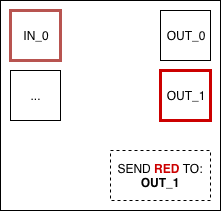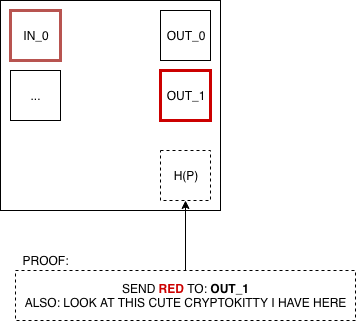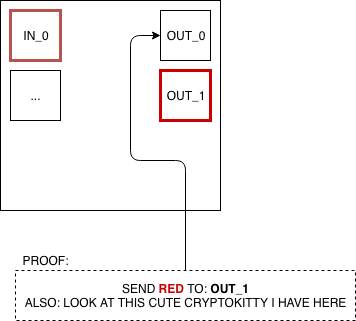Generic Assets on Bitcoin
Alekos Filini (@afilini) - Developer at BHB Network



Overview
Chapter 1 - How does Bitcoin work?
Chapter 2 - Brief history of assets on blockchains
Chapter 3 - Why RGB?
Chapter 4 - The RGB protocol
How does Bitcoin work?
Chapter 1
Bitcoin
A purely peer-to-peer version of electronic cash that allow online
payments to be sent directly from one party to another without going through a
financial institution. [...]
The network timestamps transactions by hashing them into an ongoing chain of
hash-based proof-of-work, forming a record that cannot be changed without redoing
the proof-of-work.
Bitcoin
A purely peer-to-peer version of electronic cash that allow online
payments to be sent directly from one party to another without going through a
financial institution. [...]
The network timestamps transactions by hashing them into an ongoing chain of
hash-based proof-of-work, forming a record that cannot be changed without redoing
the proof-of-work.
- There's no "official", centralized entity which controls Bitcoin
- Data are shared in a distributed (redundant) way among network participants
- Basically impossible to "stop" Bitcoin
Bitcoin
A purely peer-to-peer version of electronic cash that allow online
payments to be sent directly from one party to another without going through a
financial institution. [...]
The network timestamps transactions by hashing them into an ongoing chain of
hash-based proof-of-work, forming a record that cannot be changed without redoing
the proof-of-work.
- "Be your own bank"
- Don't have to ask for permission to anyone
- No way for a third-party to censor your transactions
Bitcoin
A purely peer-to-peer version of electronic cash that allow online
payments to be sent directly from one party to another without going through a
financial institution. [...]
The network timestamps transactions by hashing them into an ongoing chain of
hash-based proof-of-work, forming a record that cannot be changed without redoing
the proof-of-work.
- The entire network can agree on whether a transaction A was done before or after transaction B
- Even if there are noticeable network latencies involved
- Don't need a central "coordinator", fully P2P
Bitcoin
A purely peer-to-peer version of electronic cash that allow online
payments to be sent directly from one party to another without going through a
financial institution. [...]
The network timestamps transactions by hashing them into an ongoing chain of
hash-based proof-of-work, forming a record that cannot be changed without redoing
the proof-of-work.
- There's thermodynamic cost to write data to the blockchain
- The work keeps accumulating - changing data requires redoing the work
- Harder to attack Bitcoin - you would need money, time, energy, hardware
Bitcoin
Terminology
- Transaction = a digital entity which destroys one or more digital banknotes and creates one or more new digital banknotes, while making sure that sum(out) <= sum(in)
- Output = a digital banknote created by a transaction
- Input = a digital banknote spent by a transaction
Assumptions
- Blockchain = a magic black box that makes sure that outputs are spent only once, and keeps track of them
A Bitcoin Transaction

Brief history of assets on blockchains
Chapter 2
Disclaimer
- We think that most of the tokens out there are useless
- We don't want to encourage scams
- But still..
- We think that this is a really cool research project
- And also a solid platform in case you really want to issue a token
Colored Coins
- Very simple concept: let's "color" a Bitcoin output so that it's unique
- Whoever owns the output, owns the tokens
- Meta-data written in some "free" areas of the transaction
- Cons:
- Everything is public
- Hard to "decouple" tokens and the underlying Bitcoin(s)
- Limited amount of space means limiting the data embedded into the tx
"<Token>coin"
- We need more flexibility: let's create a new blockchain for our token!
- Easy to change if you need to
- Cons:
- Very unstable/unsafe: low hash-rate
- High social friction
Asset-enabled Blockchains
- Let's keep flexibility, while also "aggregating" hashing power
- Basically the Ethereum model with Solidity
- Cons:
- It's actually not solid at all: "generic-ness" is a bug, not a feature!
- Even less scalable than a blockchain: everybody has to validate everything
Asset-enabled Side-chains
- Let's create a structure similar to a blockchain, but with a "federation" of miners
- People can freely move Bitcoin in and out of the side-chain
- People can issue asset on your side-chain
- Can support ZKP stuff
- Like Confidential Assets on Liquid
- Cons:
- Not fully decentralized, there's a federation
Why RGB?
Chapter 3
Why RGB?
- Bitcoin is safe
- Huge hashing power
- Most "brain power" invested
- (relatively) long history
- Improve privacy by hiding data to the public
- Metadata are kept "off-chain" and moved independently
- More scalable
- You don't have to store/verify everything
- Easy to change/upgrade without consensus
- It's not a global, consensus-based, network
The RGB protocol
Chapter 4
The protocol
- Basically an improved colored coin protocol
- Hence the name!
- Makes use of math tricks to hide data and save bytes
- Only validate what you care about
- Limited set of "instructions" and limited attack surface
- No scripting system (we don't need it, we can reuse Bitcoin's one!)
Commitment Scheme
- AKA: how do we write "extra" data in a Bitcoin transaction
- The blockchain is basically immutable, so writing informations into it makes them immutable too
- One additional "dummy" output: OP_RETURN
- Hide data into a public key: Pay-to-contract
- Take an EC point (ECDSA pubkey)
- Calculate P_new = P_orig + h( data || P_orig) * G
- You can later prove that data is committed by showing P_orig
OP_RETURN <data>OP_DUP OP_HASH160 <h(P_new)> OP_EQUALVERIFY OP_CHECKSIG- We start from a colored coin protocol
- Move colored coins by adding meta-data in OP_RETURNS
- All readable and verifiable by everyone

Bitcoin TX
RGB
- We can move the meta-data off-chain, and replace them with an hash
- Verified only by the receiver and future owners
- A little bit more plausible deniability/privacy
- Allows to encode tons of data

RGB
- One more thing...
- Use pay-to-contract instead of OP_RETURNS
- Even more plausible deniability
- Save a few bytes and satoshis in fees

RGB
How to make a transaction
- Make a Bitcoin transaction
- It could pay whoever you want, no need to pay the token receiver
- Allows you to decouple tokens and Bitcoins
- More privacy!
- It could pay whoever you want, no need to pay the token receiver
- Create the corresponding proof
- It will contain data about who to pay
- It could be a known, existing output on the blockchain
- Or a new output you are creating in this TX
- It will contain data about who to pay
- Commit to the proof in your transaction
- Broadcast the transaction
Pseudocode
{
"vin": [
{
"txid": "......",
"vout": 0
}
],
"vout": [
{
"amount": 10,
"scriptPubKey": "OP_RETURN <h(proof)>"
}
]
}{
"vout": [
{
"asset_id": "STARBUCKS_COIN",
"amount": 100,
"type": "NEW_OUTPUT",
"index": 0
}
]
}Why can't I change my mind later?
- The transaction itself cannot be changed
- We assumed the blockchain is immutable
- It contains the hash of your proof
- You would need to find a collision
- Little bit more complex if we use pay-to-contract
- Rely on some EC math properties
How to verify a transaction
- Make sure the transaction has been confirmed by the Bitcoin network
- Download the chain of proofs up to the "origin" (the one who issued the asset)
- Verify all the proofs in between and the commitments
- Verify the amounts of each transaction
- If everything checks out you are good to go!
Pseudocode
def verify_rgb_proof(proof):
bitcoin_transaction = bitcoin.get(proof.bitcoin_txid)
assert bitcoin_transaction.valid()
assert bitcoin_transaction.verify_commitment(proof)
if proof.type == 'ISSUANCE' and len(proof.inputs) == 0:
return True
assert sum(proof.out_value) == sum(proof.in_value)
assert all([verify_rgb_proof(input) for input in proof.inputs])
return TrueUseful Links
Specifications: https://github.com/rgb-org/spec
Alpha code: https://github.com/rgb-org/rgb



Generic Assets on Bitcoin
By Alekos Filini
Generic Assets on Bitcoin
- 667



